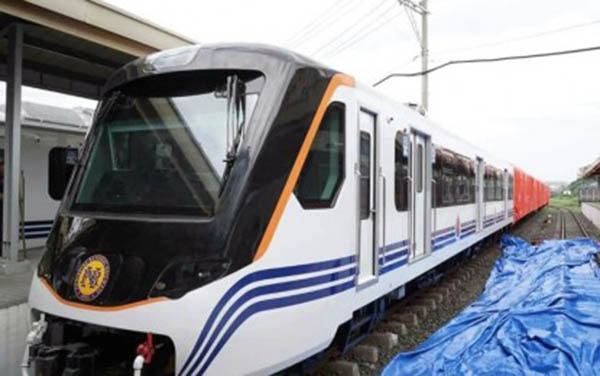
-
Multibillion-dollar “Build, Build, Build” railway projects of the Duterte administration have not moved forward and still awaiting funds
-
A Department of Transportation official has told ABS-CBN News that none of the promised funding for the projects has been received from China
-
So far, only a total of 3 billion has been received by the Philippines from China for other infrastructure projects such as the Binondo Bridge and the Kaliwa Dam
Several China-backed railway projects under the “Build, Build, Build” program are stuck because they have not received funding from Beijing, despite the previous administration’s hype about those train systems.
This was disclosed on July 14 by an official of the Department of Transportation who said the still unfunded projects include the Laguna to Bicol, Clark to Subic, and the Mindanao Railway, a campaign promise of former President Rodrigo Duterte, ABS-CBN said in a report.
“What we want the public to know is that we have no funds. The Calamba to Bicol project worth P142 billion, no funds. So do the Clark-to-Subic and Tagum-Digos projects. We are saying this to manage the expectations of the public, Congress, the Cabinet, and those who are hoping,” Transportation Undersecretary for Rails Cesar Chavez was quoted as saying.
Chavez said the P142-billion proposed 380-kilometer Philippine National Railways (PNR) connection from Banlic, Calamba to Daraga, Albay, or PNR Bicol Package 1, was the largest contract among railway projects in the pipeline.
According to the contracts signed between the Philippine and Chinese governments, funding will come from China as loans to be negotiated by both governments.
The DOTr awarded the contract for the PNR Bicol Package 1 to the Chinese joint venture China Railway Group Ltd, China Railway No. 3 Engineering Group Co. Ltd., and China Railway Engineering Consulting Group Co. Ltd. on January 18.
Construction of the PNR Bicol Package 1 was supposed to have started in the first quarter of 2022 and expected to be completed by 2024. It would go into service by the third quarter of 2025, DOTr said.

Another project that has yet to be funded is the P51-billion Subic-Clark freight railway. The contract for the project was signed by China and the Philippines in January 2021. Of the total cost of the project, P42.5 billion will be financed through official development assistance from China and the rest from local funds.
The 71-km single-track railway will be located in south-central Luzon, connecting Subic Bay Freeport Zone and Clark International Airport and will link the North Railway Project.
Construction of the freight railway is expected to be completed in 42 months.
Also yet to secure funding is the P83-billion Mindanao Railway Project, which was set to begin its Phase 1 construction for the Tagum-Davao-Digos segment in January 2019.
Former Finance Secretary Carlos Dominguez III tried to follow up on the Philippines’ loan application with China in February this year, Chavez said.
“Secretary Dominguez wrote to the Chinese government: ‘We have a loan application with you for the construction of the Calamba to Bicol [railway]. We wrote a loan application with you for the Clark to Subic [railway worth] about P51 billion. We wrote a loan application with you for the P83 billion Tagum-Davao-Digos railway’,” Chavez was quoted by ABS-CBN.
He said that Dominguez stated in his letter that “if you don’t grant these loans, consider it withdrawn.”
“What does this mean? Because there was no reply, they were withdrawn,” Chavez said.
Chavez added that President Ferdinand Marcos Jr instructed the DOTr to reopen the loan application and renegotiate with the Chinese government.
Duterte visited China in October 2016 at the invitation of Chinese President Xi Jinping. In a meeting with Filipinos during a stopover in Hong Kong, he was bringing home around US$24 billion (around P1.36 trillion at today’s exchange rate of P56.50/US$1) in investment and loan pledges.
Four years later, Duterte’s own Socioeconomic Planning Secretary, Ernesto Pernia, said China was “slow” in providing funding for the country’s infrastructure projects.
The National Economic and Development Authority said that as of August 2020, the Philippines had received only P5.9 billion for the Binondo-Intramuros and Estrella-Pantaleon bridges, P1 billion for rehabilitation of conflict-stricken Marawi City, P4.4 billion for the Chico River Pump Irrigation Project, and P12 billion for the New Centennial Water Source Kaliwa Dam.
While the railway projects await funding from China, construction of rail systems being funded by Japan and the Asian Development Bank are underway.
The Metro Manila Subway began drilling a tunnel along EDSA a few weeks ago, work on the South Commuter Railway is in progress, and so is the construction of the Malolos-Clark Railway.





Lesson learned: Never negotiate w/ them. Better deal with the japanese who are known as trusthworthy, firm, disciplined with high ethical standard. Besides, their projects and works are of excellent standard, highly superior over those of chinese
Comments are closed.